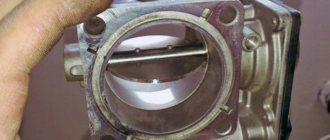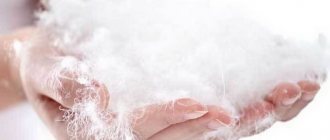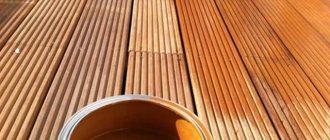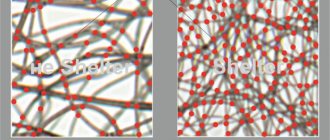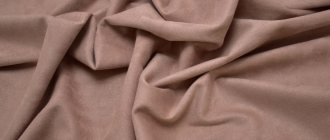Wet washing using powder or other cleaning agent is familiar to everyone. But some wardrobe items require an exceptional approach due to the delicate properties of the material.
On the label of such things, as a rule, there is one or both icons at once: “Dry cleaning”, “Do not dry clean”. In such conditions, the only way to tidy up the product is to carry out the procedure yourself without using water. But not everyone knows how to carry it out.
Advantages and disadvantages of home dry cleaning
Pros:
- Saving money. Most stains, even from delicate fabrics, can now be removed independently, without turning to professionals.
- Save time. There is no need to make a special trip to first give the item and then pick it up. In addition, the dry cleaner sets the time it needs to process the item - this is 5-7 days. What if you urgently need to clean your evening dress or trousers? Then home cleaning products come to the rescue.
- You can be confident in the result because you did the cleaning yourself.
Minuses:
- If an item is heavily soiled, it is unlikely that it will be possible to restore it to its original appearance at home. At home, perhaps tidy up your jacket or sweater a little, or wipe off a surface stain from a coat, down jacket or fur coat. And if the jacket is already very dirty or has a persistent unpleasant odor, home methods will not help.
- You can choose the wrong product for the type of fabric and ruin your clothes. Capricious materials, such as fur, can react unpredictably, especially if you use household chemicals. You can avoid this if you buy a specialized product for a specific type of fabric - we will also tell you about them.
Cleaning process
Chemicals
At home, do-it-yourself cleaning is carried out using chemical compounds. These include stain removers in the form of gel, powder, spray or wet wipes.
The following special compositions for dry cleaning at home can be mentioned:
- - SpotRemover. The gel comes with a brush for easy use, suitable for colored and white items. Helps remove traces of sweet liquids and fat.
- — gel “Minutka” for dry cleaning of dirt. Directions for use: Apply to fabric, wait for the product to dry and brush off any remaining residue.
- - Woolite. The product is intended for wool and knitwear; it is not recommended to use on items that shed.
- — Hagerty: Dry Cleaner Kit. Designed for cleaning silk, wool, cotton and linen.
- — K2r in the form of a spray. The product will help if you need to urgently remove a stain from an item.
Important: when cleaning, you do not need to use water, since professional products contain components that can independently remove dirt
Folk remedies for removing stains
To achieve results, folk remedies often need to be used several times in a row.
Scotch
Helps remove dirt from leather products. To do this, you need to apply the adhesive side of the tape to the dirt and tear it off.
Important : if the leather item is in poor condition, it is not recommended to use tape
Iron
The iron will help remove traces of oil, such as vegetable or machine oil. It is necessary to cover the contamination with paper or a paper napkin from the outside and from the inside. Heat the iron and run the surface over the stain. As the butter melts, it will be absorbed into the paper napkin.
Baking soda
Soda is an inexpensive but effective remedy.
Dry cleaning of clothes is carried out as follows:
- - take 2 teaspoons of baking soda, a teaspoon of washing powder and sprinkle on the dirty area. Pour two tablespoons of vinegar, rub with a brush or fingers and leave to act for 30 minutes. When the substances dry, you need to shake the thing.
- - if there is dirt on things from foundation, ointment or food, you need to sprinkle the stain with baking soda and shake it off after 20 minutes.
- - if the item is stained with paint, then you need to take 1/3 cup of kerosene and one tablespoon of soda. Apply heated kerosene to the contaminated area, and when the paint begins to dissolve, sprinkle with soda.
Important : after cleaning, the item must be hung in a well-ventilated area
Starch
Potato or corn starch helps remove stains without damaging the fabric. Choose a flat surface, lay clothes on it, and heat the starch. Place a napkin with starch sprinkled on it under the stain, rub lightly and leave for 2-3 hours, the starch absorbs the fat.
To remove blood stains, sprinkle them with a thick layer of cornstarch and leave them overnight. The stains will become light, and to completely remove them, it is recommended to repeat the procedure several more times.
If the item is saturated with the smell of smoke, you need to put it in a bag, pour starch into it and shake well. If you are cleaning a fur coat or item with a fur collar, then vacuum it after the procedure to completely remove any residue.
Turpentine
The product can be used for dyed silk and wool fabrics. Soak a cotton pad in turpentine and treat the stained area. If the contamination is not completely removed, the procedure must be repeated again. Remove any remaining turpentine with baking soda.
Important: to remove greasy stains, use a mixture of turpentine and ammonia, taken in equal quantities, and leave on the product for 3 hours
Wood sawdust
They can be used to remove gasoline stains; to do this, sprinkle sawdust on the contaminated area and wait until it absorbs the gasoline.
Sand
Woolen fabrics can be cleaned with dry sand. The sand is heated, sprinkled on the fabric and left until the sand cools down. Then remove the dirt with a brush.
Important : the hot sand cleaning procedure will replace dry cleaning and will help remove dust and greasy stains from things
Hydrogen peroxide
Peroxide has bleaching properties and is used for white fabrics.
Directions for use:
- - take one part lemon juice, two parts peroxide and prepare a solution. Apply to the stain, rub lightly and remove with a dry cloth;
- - mix and prepare a solution of 10 ml of ammonia and 10 ml of hydrogen peroxide, pour onto the contaminated area and leave to soak, then dry the clothes.
Ammonia
The product will help in difficult cases. Mix ammonia and table salt in a ratio of 4:1, treat the contaminated surface with the resulting mixture. Once the treated area is completely dry, remove any remaining residue with a brush.
Removing stains from the machine
Can be dry washed in a washing machine.
The procedure is carried out as follows:
- - sort your items, turn them inside out, zip them up and put them in a special laundry bag;
- - put napkins with stain remover inside;
- — set the “drying” mode, select the minimum temperature and timer for half an hour, then hang the product on a hanger.
Dry cleaning is the treatment of clothing without water or soaking. For cleaning, you can use various means: starch, soda, sand, tape, sawdust. Dry cleaning clothes at home is not difficult, the main thing is to follow certain rules during the procedure.
What kind of things is the treatment suitable for?
Dry cleaning of clothes can be carried out on all types of fabrics, but there are also varieties. Dry cleaning means surface cleaning of fabric (from debris, pet hair, etc.), as well as chemical treatment with various compounds. They cannot be applied to all materials, but the tag will help you understand what products are acceptable for a given garment. You can see several types of icons on it.
- Empty circle - only surface dry cleaning can be carried out without the use of any compounds.
- Crossed out circle – dry cleaning cannot be carried out.
- A circle with the letter A inside - the fabric can withstand the use of all chemicals for cleaning.
- With F inside – you can use products containing freons and white spirit.
- Circle with F, underlined at the bottom - care should be taken and cleaned gently.
- And with F, underlined twice at the bottom, delicate processing of the fabric is required.
- Circle with the letter P – dry cleaning should be carried out with products containing perchlorethylene. If it is underlined once or twice, then, by analogy with F, this is a gentle and delicate wash.
Dry cleaning - what is it?
The method of caring for fabric using special solvents and soaps without using water in the process has been practiced since the mid-19th century and was invented in France.
Initially, flammable materials were used for cleaning. But now there are more gentle substances widely available that are safe for the fabric itself and the person doing the cleaning.
Washing is done primarily by hand, but technological progress has recently provided models of special machines that do this task without direct human intervention. In public laundries or dry cleaners they are separate units. But in domestic conditions, some machines are equipped with a “dry wash” mode, which also greatly simplifies the process.
The clothes are washed with a solvent and then dried with warm air in a centrifuge. For specific stubborn stains, there is a separate type of substances that do not need to be washed off with water, as usual.
Important: the main advantage of this method of caring for clothes is that the fabric does not deform after treatment and does not lose its original appearance.
Having figured out what dry cleaning or washing clothes is, you should move on to how to do it yourself.
Chemicals - sprays and gels
If you don’t want to select household products from those that are at hand, you can always buy a ready-made solution in the store.
K2r
It is sold in the form of a spray and is intended for cleaning things that are marked A and P on the tag (all solvents and perchlorethylene). In addition to greasy stains, it is capable of scrubbing off paint, varnish and other stubborn stains.
Woolite Gel
This gel is added during washing to care for items after using aggressive cleansers. It contains kerotene, which smoothes out pellets and softens the pile.
Hagerty: DryCleanerKit
This product is only suitable for those who have a washing machine with a drying mode. It is a bag impregnated with special substances. Clothes are immersed in it and can withstand up to 20 washes. During drying in the machine, under the influence of temperature, the impregnation of the bag begins to evaporate and affects the item lying inside.
"Just a minute"
A cheap product that has won the trust of customers over the years of production. Our grandmothers are already familiar with it - during this time, “Minutka” has not deteriorated at all, it still removes difficult to wash stains.
Homemade and natural stain removers
Dry cleaning products do not have to be purchased at the store. Every home has at least several alternative options with no less efficiency.
Harmless compounds and devices that can be used for simple and chemical dry cleaning of things:
- Scotch tape is relevant for products made of leather or dermantine. With its help you can get rid of fresh and old stains. Even fights ink or ballpoint pen residue.
- Baking soda, talc, starch or salt work great for removing grease stains. The substances have good adsorbing properties.
- Fur products or things decorated with embroidery are cleaned with bran. They are diluted in a soap solution to a thick paste and applied to the product. You need to rub for a few minutes, and then easily shake off the residue. Sprinkle dry cereal onto the resulting stain and repeat the procedure until no traces remain at all.
- You can clean a natural fur coat with sand. But the bulk element must be pre-screened from debris, steamed in the oven and dried naturally. Before the procedure, the sand is heated, then poured onto the contaminated area of fur and distributed over the stain. After half an hour, shake it off and comb the fur coat with a comb. When working with woolen items, you will have to spend a long time cleaning out the grains with a brush.
- Gasoline is an excellent stain remover that can cope with almost any type of dirt. It is recommended to use it extremely rarely due to its specific odor and dangerous properties for humans.
- The brush is suitable for suede and similar textured items to remove dirt. Often used as an auxiliary tool for dry cleaning of fleecy items.
- Turpentine is not as flammable as gasoline, which is why it is often used as a non-standard stain remover. Helps deal with oil paint or varnish on clothes. You can only use purified substances without resins, otherwise the item will completely deteriorate.
- Hydrogen peroxide is a natural solvent, but it is best to use it only on white items - it can discolour.
- Ammonia neutralizes a wide range of contaminants of various origins. The concentrate cannot be used, only an ammonia solution of no more than 10%. Vinegar 9% refreshes the appearance of things and gets rid of dirt. Used with baking soda as a stain remover. But the reaction may be ambiguous, so you need to first try it in an inconspicuous place.
- The iron is used as an auxiliary tool for dry cleaning of greasy or still wet stains with starch, soda, talcum powder or salt. You need to lay the item out on an ironing board, pour a cleaning agent onto the dirt, cover it with tracing paper and iron it.
Before choosing a dry wash product, you should correctly determine the type of textile you will have to work with so as not to aggravate the problem.
What to pay attention to when cleaning clothes?
Caring manufacturers provide clothes with labels with comments and tips on washing and drying so that things last a long time and look impressive. But the remedies and advice indicated on them are not always convenient for the consumer. You can clean many of your wardrobe items at home using any of the methods available to you. In any of them, you can use the tools specified in this article. The main thing is that they help and do not spoil the appearance of the thing. And to understand all the nuances, first look at the tag on the product and compare the symbols with our decoding of clothing care symbols.
